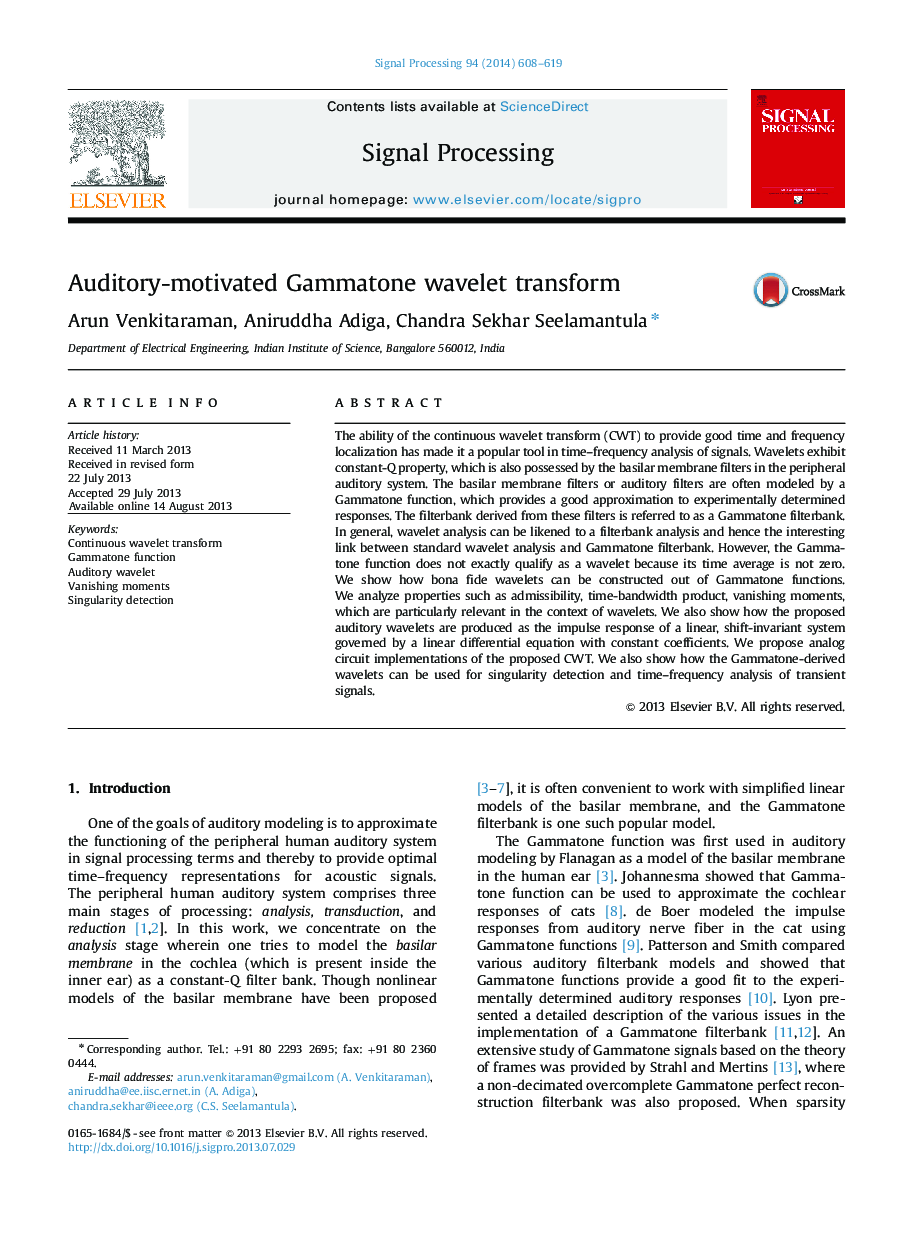| Article ID | Journal | Published Year | Pages | File Type |
|---|---|---|---|---|
| 566490 | Signal Processing | 2014 | 12 Pages |
•We propose the construction of a continuous wavelet transform motivated by the human auditory system.•A family of wavelets are derived from the popular Gammatone function model for the auditory impulse response, via repeated differentiation.•The wavelets have a time-bandwidth product close to 0.5, in addition to being causal.•We investigate the vanishing moments property of the proposed Gammatone wavelets.•We show the application of the proposed wavelets to singularity and transient detection.
The ability of the continuous wavelet transform (CWT) to provide good time and frequency localization has made it a popular tool in time–frequency analysis of signals. Wavelets exhibit constant-Q property, which is also possessed by the basilar membrane filters in the peripheral auditory system. The basilar membrane filters or auditory filters are often modeled by a Gammatone function, which provides a good approximation to experimentally determined responses. The filterbank derived from these filters is referred to as a Gammatone filterbank. In general, wavelet analysis can be likened to a filterbank analysis and hence the interesting link between standard wavelet analysis and Gammatone filterbank. However, the Gammatone function does not exactly qualify as a wavelet because its time average is not zero. We show how bona fide wavelets can be constructed out of Gammatone functions. We analyze properties such as admissibility, time-bandwidth product, vanishing moments, which are particularly relevant in the context of wavelets. We also show how the proposed auditory wavelets are produced as the impulse response of a linear, shift-invariant system governed by a linear differential equation with constant coefficients. We propose analog circuit implementations of the proposed CWT. We also show how the Gammatone-derived wavelets can be used for singularity detection and time–frequency analysis of transient signals.
